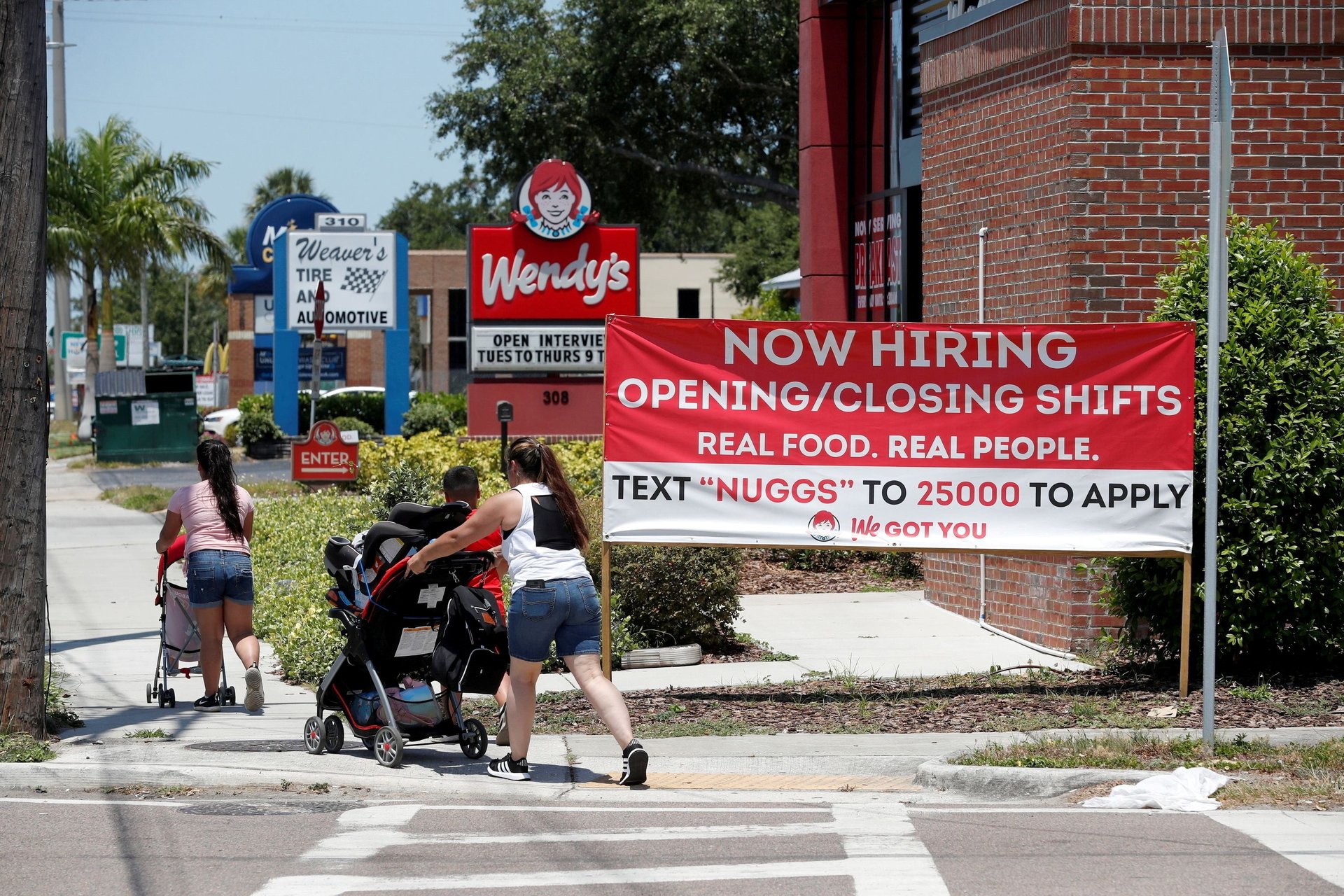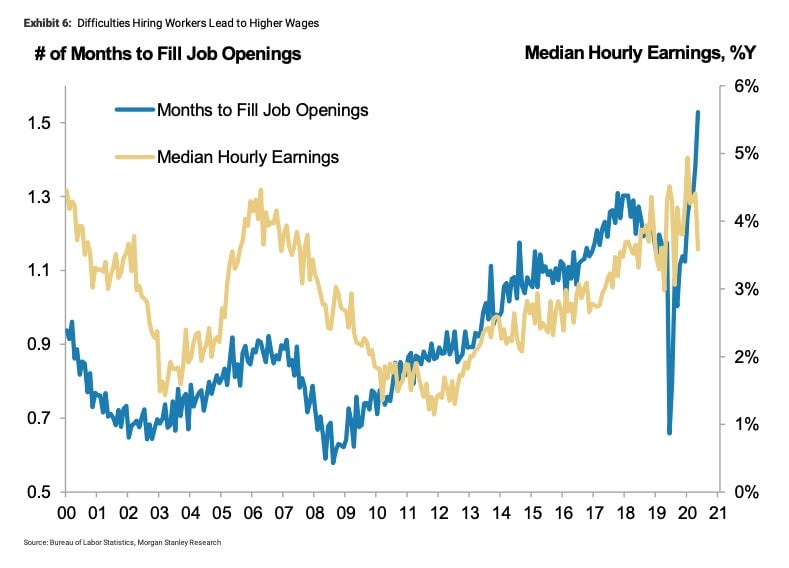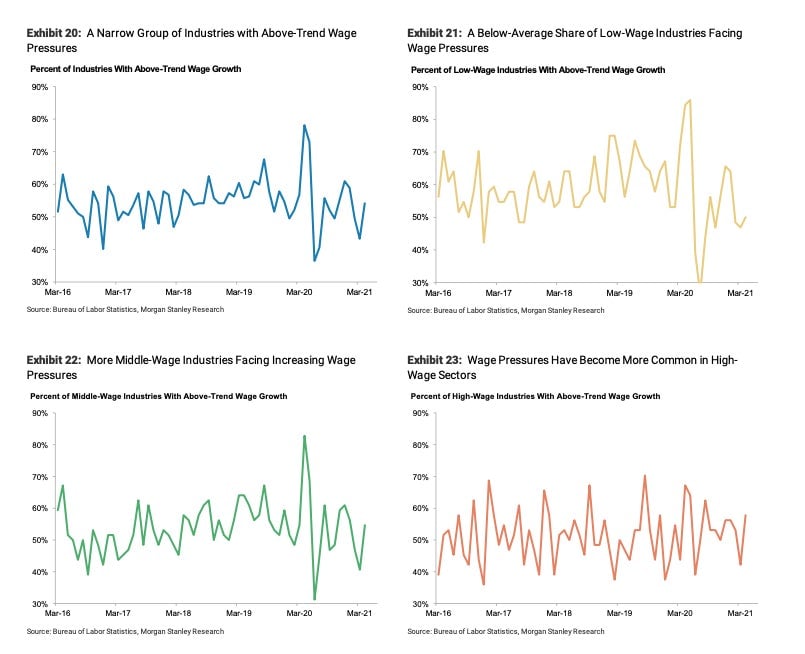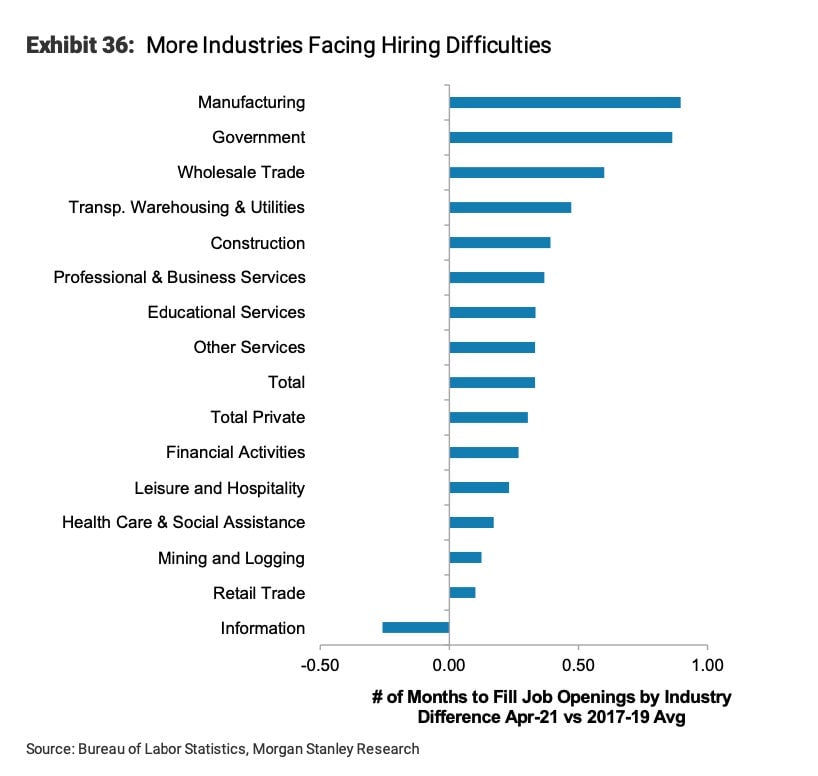Which US workers benefit most from the labor shortage?
From fast-food chains to investment banks, US employers are upping pay.


From fast-food chains to investment banks, US employers are upping pay.
The reasons vary but are clearly related to shifts triggered by the pandemic, whether that’s due to the time it’s taking employers to fill job openings or people quitting their jobs in search for better ones, as they had time during lockdown to think about what they want in life.
The problem of finding workers is widespread, as evident in the surge in mentions of the phrase “labor shortage” both in the US and globally on the most recent round of quarterly earnings calls. Labor market tightness in a growing number of industries is raising the prospect of further wage increases, a recent Morgan Stanley research report noted.
Interestingly, the US companies facing more difficulty in finding and retaining workers are in middle- and higher-wage industries, the investment bank’s analysts found. Those sectors include advertising, air transportation, real estate, legal services, office administration, construction, and employers of artists and writers.
Wage gains in those industries “reflect strong labor demand against a backdrop of labor supply shortages, particularly for skilled-workers,” Robert Rosener, a senior US economist at Morgan Stanley, told Quartz.

That’s a departure from the last US economic expansion, when wage pressures were predominantly led by lower-wage industries.
Worker pay increases are coming faster in higher-wage industries
To narrow in on which industries are experiencing the greatest wage pressures, the researchers analyzed the average hourly earnings across 192 industries and found that nearly 55% of them saw wage growth in April and May.
But the increase was not even across earnings brackets. Morgan Stanley found that just 50% of low-wage industries experienced “above-trend” wage pressures, versus 54.7% of middle-wage industries and 57.8% of high-wage industries.

The average hourly earnings in the US is about $30 an hour in 2021, according to the report.
The industries taking longest to fill jobs with workers
Jobs that are taking longer to be filled are more concentrated in middle- and high-wage industries like manufacturing, government, wholesale trade, and construction.

Middle- and high-wage industries are also the ones where the number of job openings surpass the number of jobs lost from Covid-19.
McDonald’s, Chipotle, and Amazon among those raising pay for low-wage US workers
Although wage pressures in lower-wage industries may not be showing up broadly, there are examples of industries where wage growth “has been significantly outsized,” the researchers wrote.
In May, McDonald’s announced it was raising the hourly wages for more than 36,500 employees at its company-owned restaurants by an average of 10%. That came on the heels of Chipotle saying it would boost its average wage to $15 an hour, as it looked to hire 20,000 employees across the US. Amazon also recently announced that it would hire 75,000 warehouse workers where new hires will be paid more than $17 an hour.
Meanwhile, the time it takes to fill open low-wage positions has risen to record highs, which historically leads to more wage gains, as the analysts at Morgan Stanley noted.
The changes suggest low-wage workers have more options when it comes to jobs, or at least when it comes to pay. But the effects may be short-lived.
Many of the wage gains in low-paying sectors have been in the form of signing bonuses, signaling that employers see the worker shortage as a temporary problem likely to get resolved as vaccinations continue, schools reopen, and emergency unemployment benefits expire.
Signing bonuses versus salary increases
The fact that wage gains are more prevalent higher up the wage scale may be due to differences in the expected tenure of medium- and low-wage workers, says Julia Pollak, a labor economist at ZipRecruiter.
Historically, turnover is relatively higher in low-wage roles. If you only expect to stay in a job for a few months, then you might be more motivated by a one-time bonus, versus if you expect to stay in a job for four to five years, in which case a permanent pay raise may be more valuable to you, Pollak says.
At the end of the day, for workers to secure lasting bargaining power, policies like a $15 federal minimum wage or the PRO Act, which would protect the right of workers to organize, need to be passed, Heidi Shierholz, who was the chief economist at the US Labor Department under the Obama administration and is now at the Economic Policy Institute, a left-leaning think tank, recently told Quartz.
“You’re not going to undo four decades of policies that have shifted power to employers with a very temporary surge in labor demand,” she said.